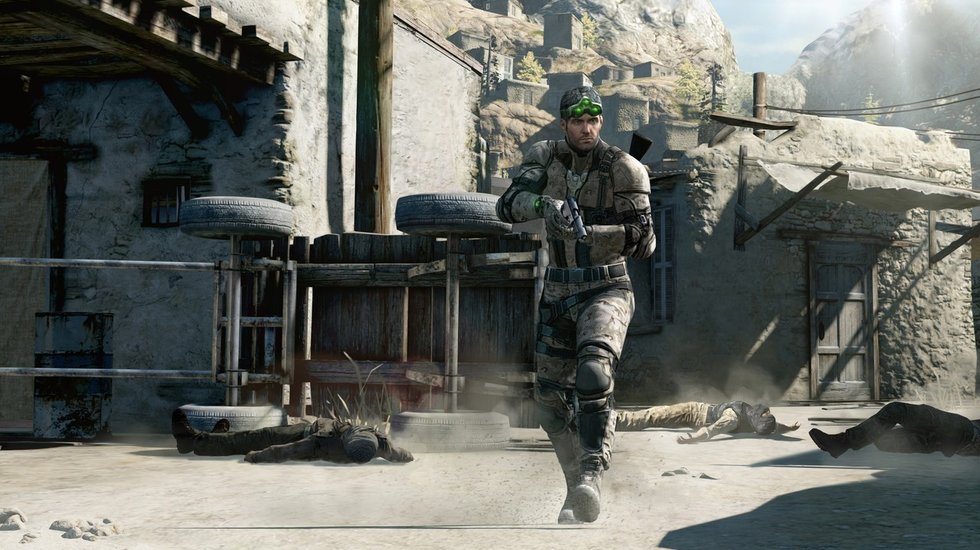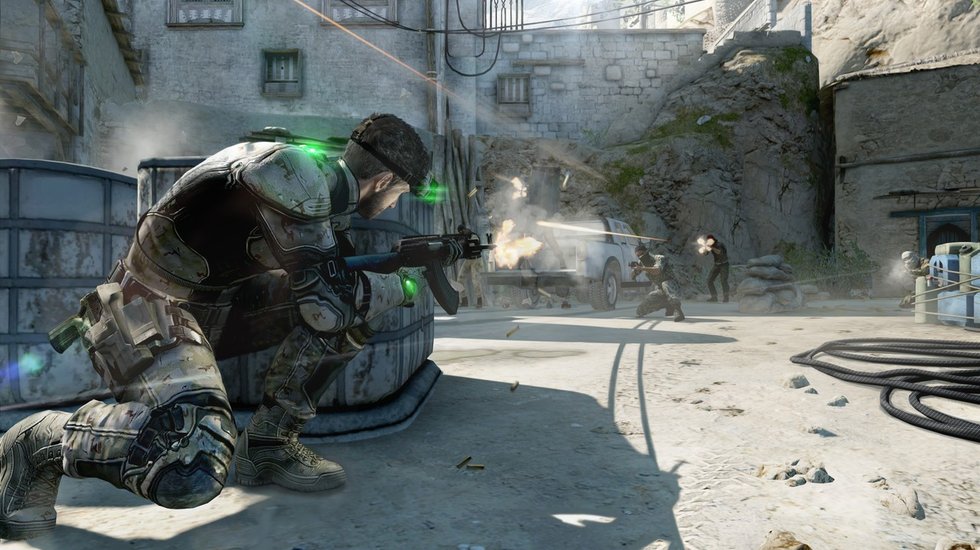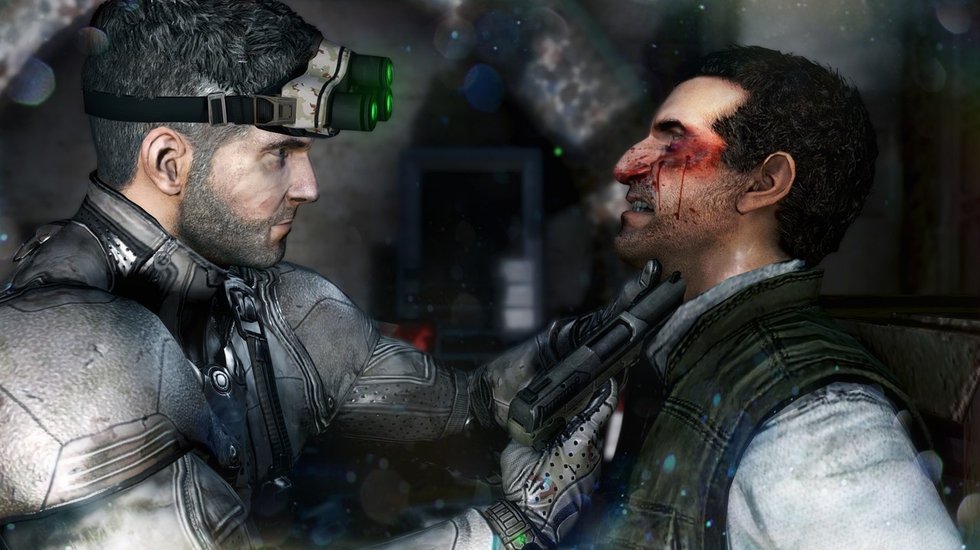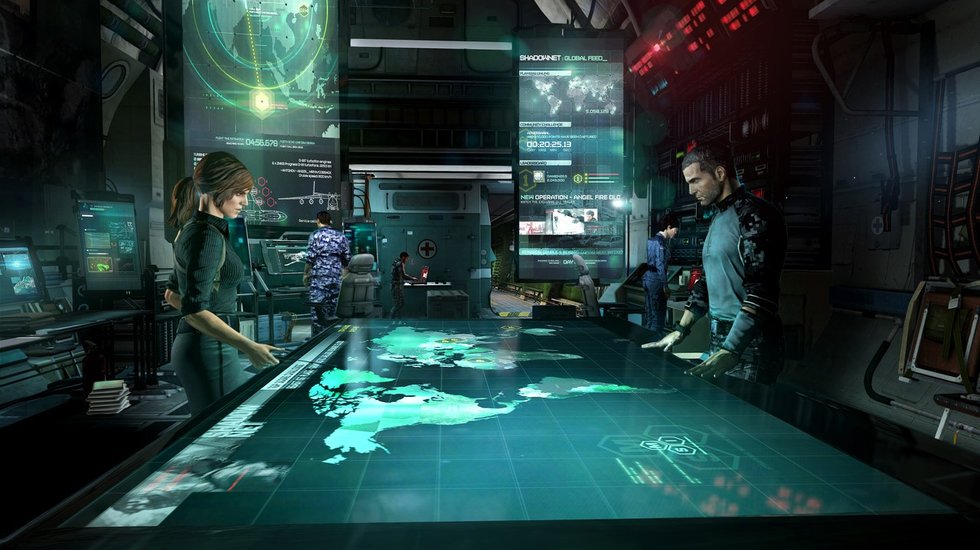plasmid303
Super Freak
Announced during Microsoft's E3 press conference. Looks like a prequel, Sam seems young.
Will update with gameplay footage and more info soon.
update:
On-stage e3 gameplay:
[ame]https://youtu.be/mZBDssn0jqI[/ame]
CG trailer
[ame]https://youtu.be/qzarD-5RRik[/ame]







Will update with gameplay footage and more info soon.
update:
On-stage e3 gameplay:
[ame]https://youtu.be/mZBDssn0jqI[/ame]
CG trailer
[ame]https://youtu.be/qzarD-5RRik[/ame]
Sam Fisher is no longer hiding in the shadows. He’s taking the fight to the enemies of the United States in plain daylight, and he’ll do it by any means necessary. Whether through more traditional, conventional stealth tactics, or by blowing everything up in sight, the notion of variety and choice dominates the landscape of Splinter Cell Blacklist. That’s a good thing considering the formidable task at hand.
Blacklist takes place six months after 2008‘s Splinter Cell Conviction. Rogue nations have pooled their resources to pose an ultimatum to the United States: withdraw all forces from deployment or suffer the consequences. This threat is backed by the blacklist, a file that contains classified intel on high profile targets and assets of the U.S. Naturally, to prevent these consequences and end the stalemate, the government calls in Sam Fisher, who demands vast and mobile resources be placed at his disposal. He forms a new 4th Echelon unit, one with a plane as its headquarters. He has access to the SMI - a Strategic Mission Interface - an operating system that helps Sam analyze and determine the best course of action. This is clearly not the deeply personal story of Conviction. This is one man waging a nation’s war. The scary part? He’s good enough to do it.
Ubisoft wants to extend that sense of power and resourcefulness to the player. Sam Fisher needs to seem like an unstoppable force, a threat so significant that it’s easy to see why the President of the United States would call on him - and him alone. To that end, Blacklist features a lot of returning ideas as well as some new ones. The result is a hybrid of stealth and high stakes action. No doubt some franchise purists who have followed the series for a decade will find this evolution jarring, but the good news here is that the old approaches aren’t going anywhere. They’re now just supplemented by alternatives - alternatives that allow you to engage in large scale firefights, call in air support and generally unleash hell upon guys that could easy be killed in the darkness with a knife.
At the heart of Blacklist is the notion of fluid traversal, which also lends itself to combat and the implementation of being able to kill while in motion. Though reasonably self-explanatory, these movement and combat options can change how certain scenarios are approached. Simply holding down one button will now allow players to sprint through environments, leaping over obstacles and climbing over objects as necessary. Taking out enemies during that dash is as easy as tapping a button. The goal here is to remove the challenges that can come with complicated, frustrating controls. The emphasis and focus should be on dealing with the objective - and opposition to that objective.
That’s not to say that the game’s designers always call for a faster pace. Sam can grab from cover, hang from ledges and move bodies. He has his snake cam, sticky shockers and knife. He'll torture men, digging his knife into their shoulder, and players will control the movement of the blade. In other words, he will do whatever the hell he wants. Whatever it takes. Blacklist takes the idea of “aggressive stealth” of Conviction, but then allows players to completely drop all pretenses and shoot it out, machine guns blazing, even behind cover if they’re completely outnumbered. Classic Splinter Cell ideas are being mixed with new ones, all of it guided by the larger sense of flexibility and strategy. Better yet, the game affords the player the option of finding a middle ground between stealth and action. Sam might be torturing a man one minute and then sprinting to cover as a half dozen men fire upon him the next. In one scenario he’s calling in air support from above, and later on he’s using his snake cam to mark and execute his enemies.
The evolution of Splinter Cell applies to its cooperative and adversarial modes as well. Longtime fans will be pleased to hear that the multiplayer mode Spies vs. Mercenaries, missing from Conviction, will return. Both it and the larger co-op concept are more integrated into the single player experience, both through the game’s ‘economy system’ and the actual missions themselves. Ubisoft wouldn’t get into details, but it appears as though mission parameters can actually be affected by the completion of objectives in other modes.
Blacklist is still a ways from completion. Due out in Spring 2013 (along with every other game known to man), the team at Ubisoft Toronto has much more to develop, and we have much more to learn. It is clear, however, that this game is building upon Conviction, emphasizing its more aggressive nature while bringing back old tools to allow players stealthier options. In previous Splinter Cell games we were playing as Sam Fisher. Now we’re finally starting to feel like we are him.







Last edited:











